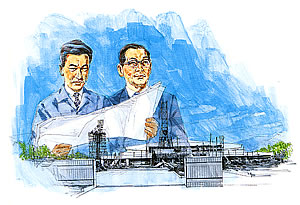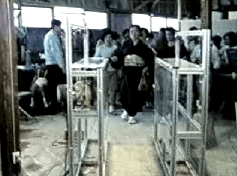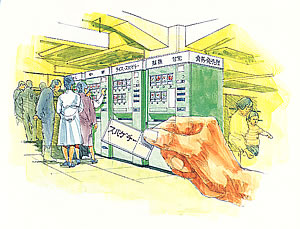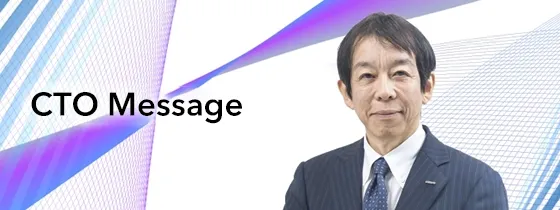Part 4: Establishment of the Central R&D Laboratory and the Cybernation Revolution
Establishment of OMRON's corporate motto

The Japanese economy enjoyed rapid growth in the latter part of the 1950s. With OMRON's corporate foundations cemented, President Kazuma Tateisi, who began his career as an engineer, believed that OMRON must strengthen its R&D efforts in order to better accommodate growing market demands.
OMRON's Central R&D Laboratory was established in October 1960 in Nagaoka, Kyoto, at a cost of 280 million yen (approximately four times the company's capital at the time). Many thought of the lab as a foolish investment by an eccentric, geeky president. Mr. Tateisi knew that he was taking a big chance, but he correctly predicted that the facility, with its completely new R&D system, would be an asset for the company as it nurtured upcoming young researchers. These researchers' efforts enabled OMRON to develop a broad range of sophisticated, new products, which helped solidify the company's position as a pioneer of automatic control components and gave OMRON a reputation as a technological innovator.
Vending machines and the Cybernation Revolution

In 1963, automatic vending machines made their first appearance on city streets. Under President Tateisi's direction, OMRON engineers began work on the development of an automatic vending machine capable of dispensing 121 different meal tickets, as well as a bill changer. In less than one month, a team of young Central R&D Laboratory researchers were able to perfect these machines.
Aside from significantly raising OMRON's level of technology, the development of the automatic vending machine and bill changer allowed the company to identify new needs in society. Shortly after the machines were completed, OMRON built an automatic meal ticket vending machine for Daimaru Department Store in Kyoto. Daimaru needed versatile machines that could handle 10, 50 and 100 yen coins while dispensing seven types of meal tickets. Such machines had to be able to verify the amount each coin was worth and give change. In addition to meeting these requirements, OMRON also incorporated technologies for detecting counterfeit coins and performing three-digit calculations into the system. This technological innovation was the first step toward the Cybernation Revolution.
Surprisingly, Japan's National Research Institute of Police Science showed a strong interest in OMRON's new automatic vending machine and bill changer. The institute was trying to solve a case involving fake 1,000 yen bills, and they urgently needed a machine that could detect counterfeit notes. Again under President Tateisi's leadership, OMRON researchers succeeded in developing such a machine within eight days. Everyone involved was extremely impressed with the accuracy and detection capability of this machine.
Mr. Tateisi often said "Taking on challenges and finding solutions to difficult questions is what being an engineer is all about." By combining advanced solid-state technology with the computer technology OMRON accumulated through the production of the meal ticket vending machine, the company was also able to develop a vehicle detector and, soon after, an automatic traffic signal capable of controlling the timing of signals according to traffic volume. These technologies went on to become the basis of today's traffic control and road management systems.
Major developments in the 1960s

In September 1963, President Tateisi traveled to the United States to tour American factories. There he was offered the opportunity to co-develop an automatic vending machine capable of accept credit cards with the leading American vending machine manufacturer, Automatic Canteen Co. For Mr. Tateisi, this represented an opportunity to get involved in a new area of vending machine technology. OMRON and Automatic Canteen succeeded in developing the system in just two years. When word spread to the media, the development was big news not only in the US but in Japan as well.
The card system technology employed in the vending machine later became the foundation for the development of cash dispensers and automatic teller machines, which created a revolutionary wave of automation in banking operations.
At the same time, the technology used for OMRON's versatile meal ticket vending machine was attracting a great deal of attention for its potential applications. OMRON's first automatic ticket dispensers were supplied to National Railway's (presently JR West) Kobe station in 1965 as a novel way of handling rapidly increasing passenger volume. This was soon followed by the development of a ticket gate system in cooperation with Kinki Nippon Railway, which answered the growing need for labor-saving methods of train station management.
In 1967, in preparation for EXPO '70 in Osaka, the world's first unmanned train station system was installed in Hankyu Railway's Kitasenri station. This system consisted of rows of ticket vending machines, commuter pass dispensers and automatic ticket gates. Since then, most cities in Japan have adopted OMRON's unmanned train station systems.

















